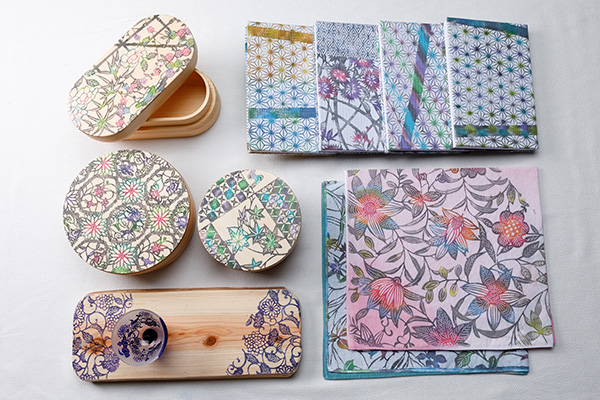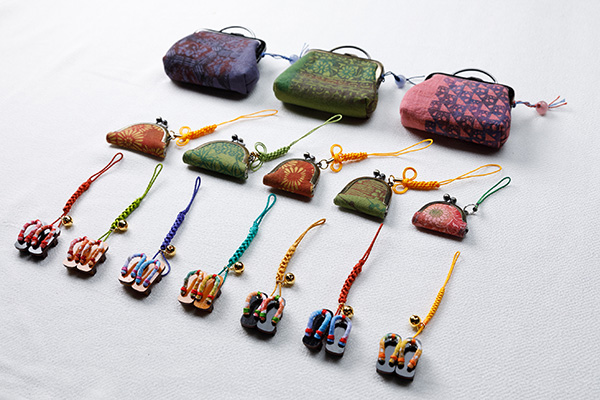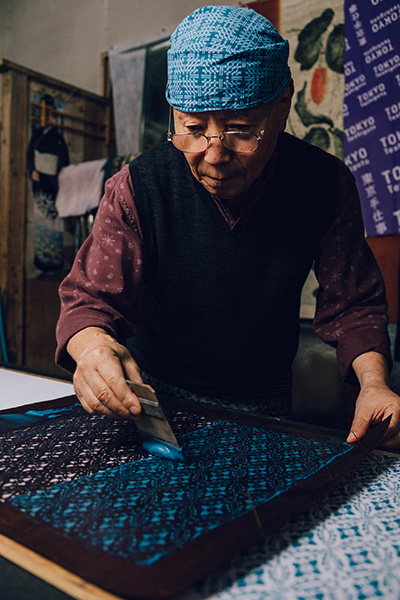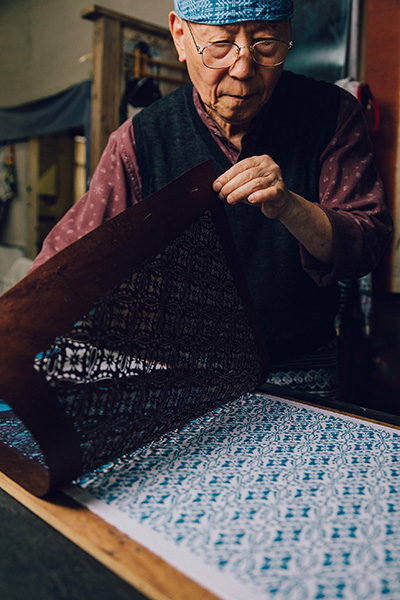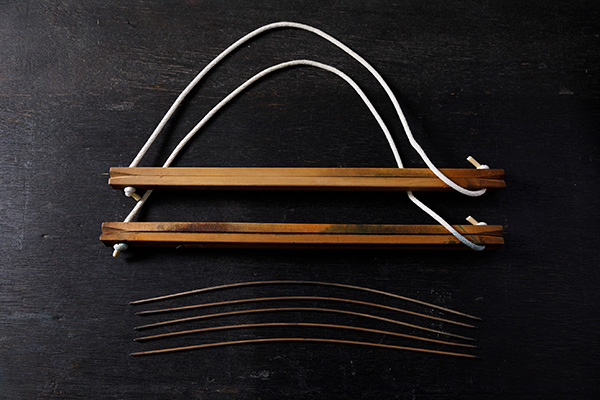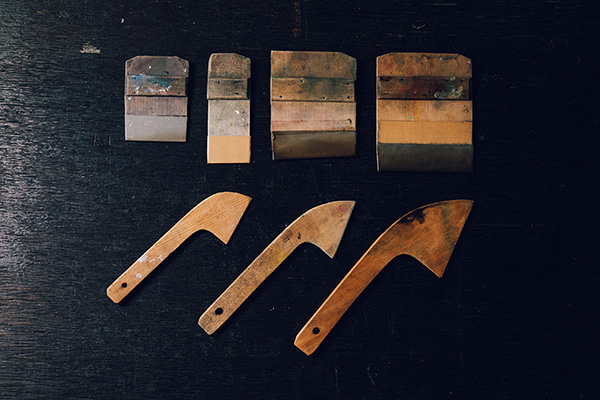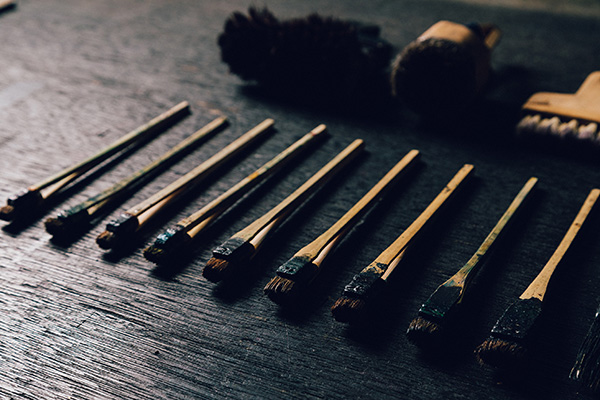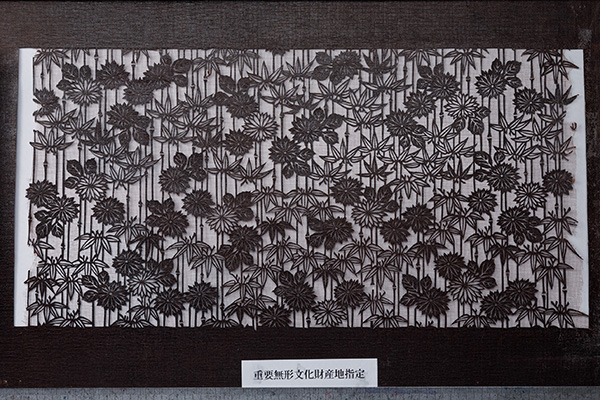Katazome (Stencil Dyeing)
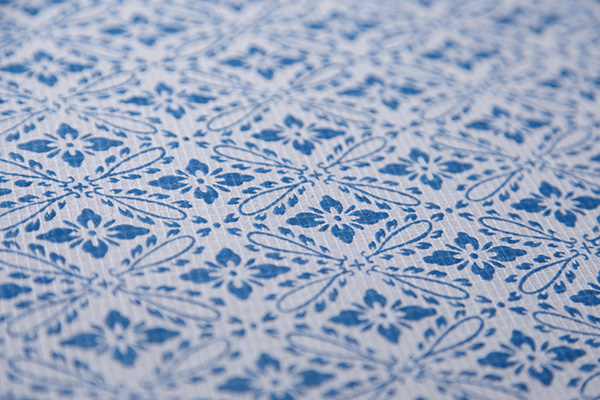 Stencil dyeing , which is said to have come to Japan during the Nara period, is a manner of dyeing that takes a great deal of time and effort to perform due to the whole dyeing process being done by hand. Using sturdy pattern paper called “shibugami,” a kind of washi Japanese paper made by hand and coated with persimmon juice, the “shibugami” is placed on top of the pattern paper with a design hand-carved into it, then after setting an adhesive, colored dye is set and the finished product is produced. This traditional procedure is a special one out of the multitude of different manners of stencil dyeing, including those where one small pattern sheet is used and multiple colors of dye are applied with large and fine brushes, a process known as tezashigatazome, or the method of kataezome by which beautiful, multicolored designs resembling illustrations are produced by repeatedly applying adhesive and then dye to pattern sheets.
Stencil dyeing , which is said to have come to Japan during the Nara period, is a manner of dyeing that takes a great deal of time and effort to perform due to the whole dyeing process being done by hand. Using sturdy pattern paper called “shibugami,” a kind of washi Japanese paper made by hand and coated with persimmon juice, the “shibugami” is placed on top of the pattern paper with a design hand-carved into it, then after setting an adhesive, colored dye is set and the finished product is produced. This traditional procedure is a special one out of the multitude of different manners of stencil dyeing, including those where one small pattern sheet is used and multiple colors of dye are applied with large and fine brushes, a process known as tezashigatazome, or the method of kataezome by which beautiful, multicolored designs resembling illustrations are produced by repeatedly applying adhesive and then dye to pattern sheets.
